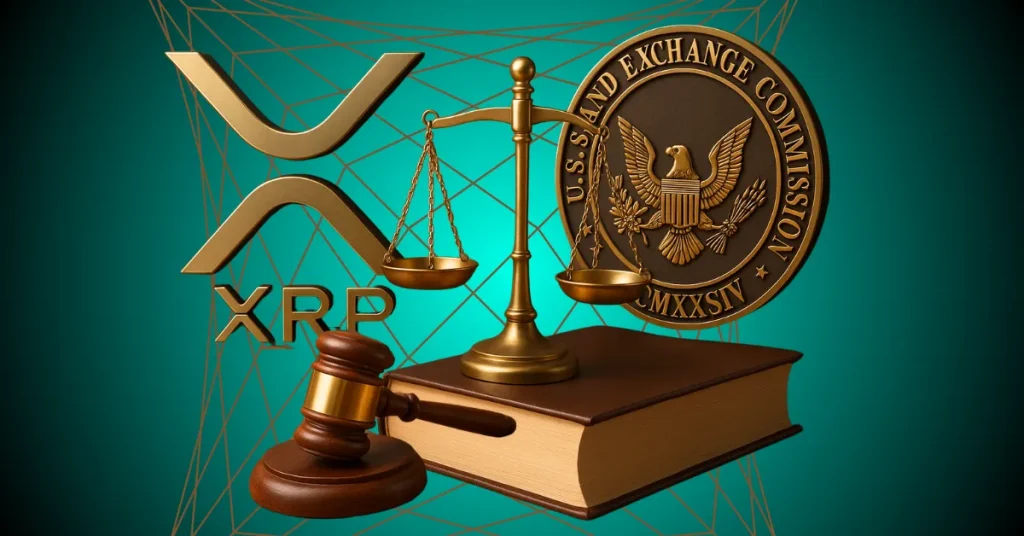
The Ripple-SEC legal battle has become a defining moment for the cryptocurrency industry, particularly in determining what constitutes an unregistered security in the United States. For nearly five years, stakeholders have awaited a resolution that could set a precedent for the broader blockchain asset market. However, recent developments in the case have prolonged the uncertainty, as Judge Analisa Torres rejected a joint settlement proposal from Ripple Labs and the U.S. Securities and Exchange Commission (SEC). This decision underscores the tension between judicial finality and the pragmatic settlements that both regulators and companies often seek.
The Heart of the Matter: Why the Settlement Was Rejected
After years of legal conflict, Ripple and the SEC made an unusual joint motion seeking an “indicative ruling.” Their proposal aimed to reduce the original $125 million civil penalty to as little as $50 million and lift a permanent injunction preventing Ripple from offering XRP directly to institutional clients. The parties argued that “exceptional circumstances” justified this request under Rule 60(b)(6) of the Federal Rules of Civil Procedure, a rarely used provision for reopening finalized cases.
However, Judge Torres dismissed this proposal in a five-page opinion, citing several key reasons:
– Procedural Integrity: The judge emphasized that court decisions must remain final and cannot be easily overturned by the parties involved, even after prolonged legal battles.
– Ripple’s Track Record: Torres highlighted Ripple’s history of violating securities laws and its perceived lack of accountability, which she believed undermined the company’s request for leniency.
– Lack of Legal Justification: The joint proposal failed to provide sufficient legal reasoning to justify overturning the existing injunction and penalty, which the judge had previously deemed appropriate.
This ruling demonstrates that judicial decisions are not merely negotiable agreements but must uphold legal principles and public interest, even in high-stakes cases.
Ripple’s Checkered History: The Roots of the Court’s Distrust
Ripple’s reputation in regulatory and legal circles has been mixed. While the company secured a significant victory last year when Judge Torres ruled that XRP’s programmatic sales to the public were not securities transactions, the judge also found Ripple liable for unregistered securities sales to institutional investors. This dual outcome reflects the complexity of Ripple’s business model and its approach to compliance.
Judge Torres’s skepticism toward Ripple’s motives is rooted in the company’s deliberate actions and the scale of its offerings. The recent joint settlement proposal appeared to be a strategic move to limit liability rather than a response to new evidence or changed circumstances. The court was unwilling to grant exceptional relief based on what it viewed as a tactical maneuver rather than a genuine need for legal correction.
The SEC’s Dilemma: Accountability vs. Pragmatic Settlement
The SEC also faces a challenging position. After years of aggressive prosecution, the agency is eager to secure a favorable outcome without risking an appellate ruling that could limit its authority over cryptocurrencies. The joint settlement proposal offered a pragmatic solution: a reduced penalty, a press release, and avoidance of further legal uncertainty.
However, Judge Torres saw through this strategy. She recognized that allowing the SEC and Ripple to prearrange a settlement would undermine transparency, due process, and the need for robust regulatory standards in an evolving market. The adversarial legal process exists to ensure fairness and accountability, and the court was not willing to bypass it for the sake of convenience.
Legal and Market Consequences: Uncertainty Rules the Day
The immediate consequences of Judge Torres’s ruling are significant:
Rule 60(b)(6) and the Rarity of Judicial Do-Overs
The attempted use of Rule 60(b)(6) highlights the rarity of judicial do-overs. This provision allows courts to revisit finalized judgments in “extraordinary circumstances,” but such motions are rarely granted. The mere agreement of both parties is insufficient; there must be a fundamental change in facts, evidence of fraud, or a clear error in the original proceedings. Judge Torres’s ruling reaffirms that reopening settled matters is not a matter of mutual convenience, even in high-profile cases.
What’s Next? Cold Reality and Prolonged Appeals
With the settlement proposal rejected, both Ripple and the SEC face a lengthy appeals process. The SEC must file its next substantive update by August 15, 2025, pushing the resolution even further into the future.
– For Ripple, the path ahead remains difficult. The company’s primary business—offering XRP to institutional partners—remains blocked by the injunction, forcing it to operate under constraints.
– For the SEC, the quest for closure is far from over. The agency must defend its position in the appeals process, with the risk that a higher court could limit its authority or hand it a pyrrhic victory.
– For the wider industry, the uncertainty persists. The question of whether crypto tokens are securities remains unanswered, forcing businesses to navigate regulatory risks while innovating.
Conclusion: No Shortcuts, Only Hard Lessons
Judge Analisa Torres’s ruling sends a clear message: accountability, process, and legal precedent still matter, especially in uncharted territory like digital assets. Settlement is not just about negotiation but about confronting the legal and factual record in full. Ripple remains constrained, the SEC remains uncertain, and the crypto world must wait longer for definitive answers. There are no shortcuts to justice—no matter how appealing a quick settlement may seem.





